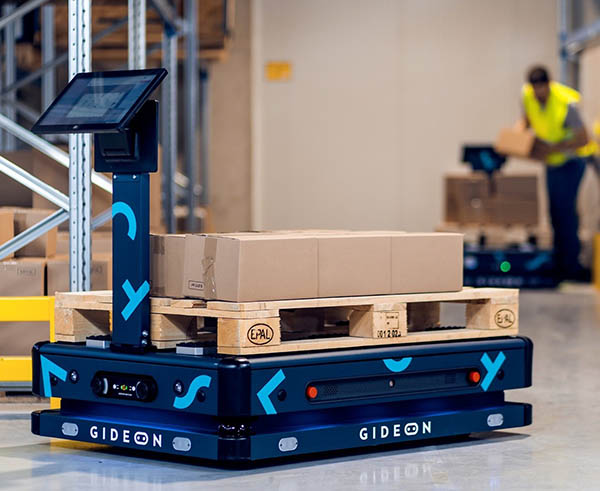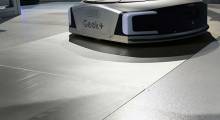Gideon Robotics last week introduced its new autonomous case-picking robot named Casey. The system can carry loads of up to 1000 kg (2,200 lb.), is powered by Gideon's proprietary autonomy stack, and is equipped with a simple picking application.
The company was founded in 2017 and has offices in Zagreb, Croatia and Dover, Del. The company said its AMRs use spatial artificial intelligence and 3D vision. In April, Gideon launched Trey, its autonomous forklift.
With Casey, Gideon said it is helping companies manage the severe labor shortages and e-commerce demand by automating and optimizing manual case picking.
Casey AMR can help meet e-commerce demands
The rise of e-commerce, due to its higher labor intensity and customer expectations, is a clear signal that new automation is the key to sustainable growth, the company argued.
In 2021, $4.9 trillion was spent online globally. That number is expected to grow by 50% over the next four years, according to Statista.com. It is estimated to reach $7.4 trillion by 2025.
Gideon said Casey is a complete case picking solution, pairing its super flexible AI and vision-based autonomous mobile robots and optimization software. It brings people and robots into an intelligent partnership, increasing throughput and productivity by removing inefficient workflows, costly infrastructure, and scalability bottlenecks, the company said.
“We are proud to announce the new addition to our product family,” said Josip Ćesić, co-founder and chief technology officer of Gideon. “The traditional case picking is an entirely manual process, and it comes with high cost, low safety, and limited scalability. We bring a new way to solve the old problem: enabling people and robots to collaborate closely and create more value by working together in an optimized way.”
Casey brings value by creating a measurable impact on multiple levels, the company added. It does this by optimizing robot and people workflows, reducing in-aisle walking, and improving pick rate and accuracy. Casey also provides real-time operations visibility, helping cut unplanned production downtime.
Article topics
Email Sign Up

















